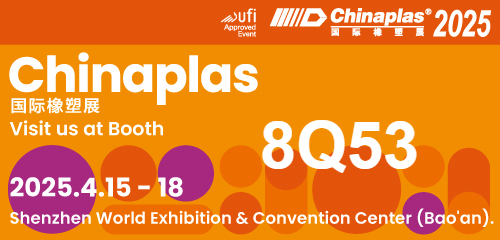High-transparency PET sheets demand exceptional melt stability, precise temperature control, and uniform pressure distribution. As a critical component of the extrusion system, the melt pump achieves the following functions through precision engineering:
1. Stabilizing Melt Pressure and Flow Rate to Ensure High Transparency
Pressure Fluctuation Suppression
The melt pump employs a volumetric conveying principle via gear meshing to buffer pressure pulsations caused by screw speed variations or temperature fluctuations in the extruder, ensuring consistent melt pressure at the die. For example, in optical-grade PET sheet production, this function prevents surface flow marks and uneven thickness due to unstable pressure, thereby maintaining high transparency.
Precise Flow Control
The melt pump’s output flow rate exhibits a linear relationship with rotational speed, enabling precise control of melt flow by adjusting pump speed to meet sheet thickness uniformity requirements (thickness tolerance ≤ ±1%). This characteristic has been validated in medical-grade PVC sheet production, where its homogenization function ensures uniform plasticizer distribution, avoiding brittleness or leaching caused by local concentration differences. The same principle applies to PET sheet production.
2. Melt Homogenization to Enhance Surface Quality
Elimination of "Dead Zone" Residues
The shearing and mixing action of internal gears in the melt pump eliminates residues in melt "dead zones," promoting additive dispersion and reducing defects such as gels and crystal points. For instance, in high-transparency PET sheet production, this function significantly improves surface smoothness, preventing reduced light transmittance caused by impurities.
Thermal Stability Control
By optimizing flow channel design and heating systems, the melt pump achieves precise melt temperature control (fluctuation range ≤ ±1°C), avoiding performance variations (e.g., inconsistent shrinkage rates or degraded mechanical properties) due to uneven temperatures. For PET sheets, temperature stability directly influences crystallinity control, thereby affecting transparency and mechanical strength.
3. Reducing Energy Consumption and Equipment Wear to Extend Service Life
Pressure Reduction and Stabilization
The melt pump assumes pressure-building duties at the extruder’s end, allowing the screw to operate under lower pressure and reducing wear between the screw and barrel. For example, in processing high-viscosity engineering plastics like PEEK and LCP, the melt pump delivers output pressures up to 40 MPa, overcoming traditional extruders’ viscosity limitations while reducing equipment load.
Energy Efficiency Optimization
The melt pump’s efficient conveying capability lowers the extruder motor load, reducing overall energy consumption by 15%–30%. This advantage is particularly significant in continuous PET sheet production, substantially cutting long-term operational costs.
4. Technical Parameters and Selection Recommendations
Key Parameters
Pressure Range: General-purpose melt pumps (e.g., JM-B series) support pressures up to 35 MPa, meeting PET sheet extrusion demands.
Temperature Range: Maximum operating temperature ≤ 350°C, compatible with PET melt processing temperatures.
Viscosity Adaptability: Suitable for melts with viscosities ranging from 1 to 20,000 Pa·s, covering PET sheet production requirements.
Material Selection: Pump bodies are recommended to use high-temperature tool steel or chromium-nickel alloy steel, while gears should employ nitrided steel to ensure corrosion resistance and high-pressure stability.
Installation Options
The melt pump’s input shaft supports horizontal or vertical layouts, with drive systems typically including motors, reducers, and universal couplings. For example, the JM-B series melt pump can adopt electric drives, integrating seamlessly with existing extrusion lines without extensive modifications.
5. Application Scenarios and Case Studies
Optical-Grade PET Sheets
The melt pump’s pressure and flow stabilization characteristics prevent surface defects caused by pressure fluctuations, meeting stringent transparency requirements in electronics and optics.
Multilayer Co-Extruded PET Sheets
The melt pump independently controls the flow rate and pressure of each layer, ensuring precise interlayer adhesion strength and thickness ratios for high-performance composite materials.
Thermally Sensitive Material Processing
By reducing extruder backpressure, the melt pump minimizes melt residence time in the barrel, preventing performance degradation due to prolonged thermal exposure—particularly advantageous for processing thermally sensitive materials like PET.
Email: sale@meltpump.com
WhatsApp: +86 158 3833 1071
Previous:Rubber extrusion melt pumpNext:Theoretical and Actual Flow Rate of Melt Gear Pumps



